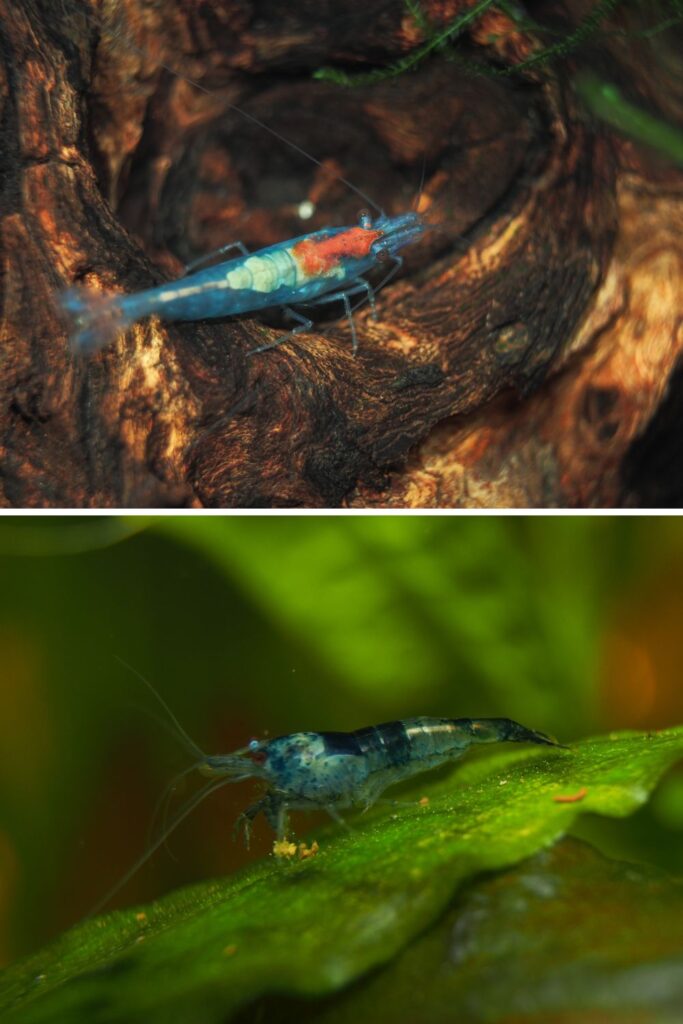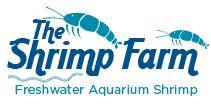Blue rili shrimp (Neocaridina davidi var. 'Blue Rili') | Care & info
Looking for a colorful but easy-care dwarf shrimp to add to your freshwater aquarium? Here on the blog, we've already discussed red rili shrimp, carbon rili shrimp and orange rili shrimp, but the rili party doesn't end there! Let us introduce you to the blue rili shrimp (Neocaridina davidi 'Blue Rili'), another beautiful result of selective breeding by dwarf shrimp enthusiasts.
Keep reading for everything you need to know about blue rili shrimp and keeping this Neocaridina variety in your home aquarium.
| Scientific name | Neocaridina davidi var. "Blue Rili" |
| Common names | Rili shrimp, blue rili shrimp |
| Difficulty level | Easy |
| Origin | Taiwan |
Table of Contents
Blue rili shrimp appearance
Blue rili shrimp are a variety of Neocaridina davidi which has been selectively bred for color. These dwarf shrimp only grow to a maximum size of around 1", with the females being larger than the males.
Keep in mind that common names for different Neocaridina varieties aren't registered and can be confusing. For example, there are two types of shrimp out there that are commonly referred to as blue rili shrimp, but they look different. One is basically a red rili that sports a blue hue on the body parts that are normally transparent. The other also has a blue hue, but the red is replaced by deep, sapphire-blue coloration.
The good news? Since these two types of blue rilis are just color morphs of the exact same shrimp species, this care guide applies to both. Their care requirements are identical!
Setting up a blue rili shrimp aquarium
Requirements
Like other members of the Neocaridina genus, the blue rili shrimp isn't demanding at all when it comes to its environment. The most important factor is water quality, which should always be high. You can keep these dwarf shrimp in aquariums of 2.5 gallons and up, although 5+ gallons is recommended for beginners. After all, i's easier to keep the water parameters within an acceptable range in a larger set-up.
Plenty of decorations are appreciated, as shrimp are prey animals that appreciate having the option of dashing into hiding if they feel the need. A substrate isn't necessary, but many aquarists like using dark-colored fine gravel or coarse sand to really make their rilis' colors pop.
Water quality
Keeping the aquarium water quality high is the key to successfully raising any dwarf shrimp, and that's no different for this Neocaridina davidi variety. Your tank should be filtered and fully cycled before you introduce your blue rili shrimp (or any livestock for that matter). Liquid test kits for ammonia, nitrite and nitrate should show zero, zero and <10 respectively.
In order to keep the water parameters under control after the initial cycling process, it's important to do small water changes (10-20%) on a weekly basis using dechlorinated water.
pH: 6.2-8.0
Temperature: 65-85 °F
GH: 4-8
KH: 3-15
Total Dissolved Solids: 150-200
Tankmates
Dwarf shrimp like these generally don't make the best addition to a community aquarium. Even most of the peaceful fish species out there will still make a quick snack out of a baby shrimp, which is less than ideal if you're trying to expand your colony. Still, keeping yours in a peaceful community tank with small fish can work if you don't mind losing the occasional shrimp fry.
For the best breeding results, keep your blue rili shrimp with other invertebrates only. There are plenty of suitable choices out there! Neocaridina shrimp don't interbreed with the popular Crystal Red shrimp, making those a popular blue rili tankmate. You could also consider one of the various popular aquarium snail species, which are exclusively detrivores and won't hurt your shrimp. We particularly love the algae-eating red racer nerite snail for our shrimp tanks.
Blue rili shrimp diet
Feeding dwarf shrimp is a breeze, since they're naturally omnivores that will gladly consume pretty much anything edible they come across. Their wild ancestors feed on things like biofilm, algae and detritus, but since our aquariums are too clean to sustain a colony this way, supplemental feedings are necessary.
You can feed your shrimp around once a day, using a high-quality shrimp food to ensure the best color and successful molting (it's not nice to see one get stuck while molting because it didn't get enough calcium to produce a proper new exoskeleton). Add variety using all sorts of shrimp snacks, fresh blanched veggies, frozen fish foods, algae tabs and much more.
Breeding blue rili shrimp
We can honestly be pretty short about breeding when it comes to Neocaridina shrimp like blue rilis. All you have to do is provide a pleasant environment with high water quality and nutritious shrimp food. The shrimp will take care of the rest themselves!
If you'd like to know more, you could have a look at the article on breeding dwarf shrimp.
Buying blue rili shrimp
Blue rili shrimp are a relatively new addition to the shrimp hobby, but you should be able to find them for sale online. The Shrimp Farm carries a blue rili variety that has red patches and a blue hue on the rest of the body.



 Shrimp
Shrimp Fish
Fish Crab &
Crab & Plants
Plants Foods
Foods Snails
Snails
